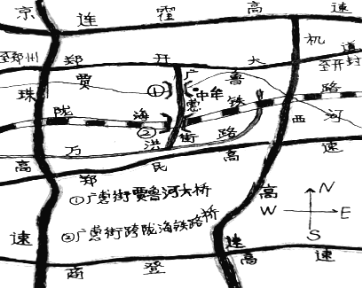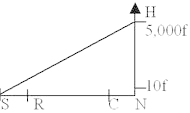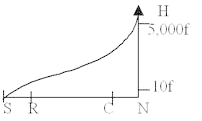题目内容
【题目】Directions: Complete the following passage by using the words in the box. Each word can be only used once. Note that there is one word more than you need.

Sept 27 is World Tourism Day. Of course, travel isn’t a new discovery. Imagine how Italian traveler Marco Polo must have felt when he found himself on Chinese 【1】, seeing a way of life quite different from anything he’d seen before.
And how 【2】 must it have been to listen to Zhang Qian when he returned to China from his journey through Central Asia and West Asia? His brain must have been packed with everything he’d seen and heard, leading to the 【3】 of the Silk Road.
Travel is one of the most exciting experiences a human being can have. Nowadays, more people are traveling than ever before. By train, plane and car, people all around the globe are 【4】 to places that people didn’t even know 【5】 a few centuries ago, or only knew from books.
Some people have traveled all over the world, and travel is a way of life to them. They perhaps know what to expect before they travel. That’s why the best travel is when it’s for the first time. Imagine a person who has always wanted to travel to the United States. Of course, they’ve probably seen the Statue of Liberty a thousand times on the TV, and the White House, and all the other famous 【6】 But none of that would compare to the 【7】 of looking out of the cabin window as the plane lands, watching the cities and streets of the real America come into 【8】.
Although travel is often just for fun, it’s also 【9】. We may not know that we are getting an education, but we still are.
We’re learning every day: new words in a new language, new people, and new ways of life. But this learning takes place in the school of the world, not the classroom. One of the lessons we learn is 【10】 a moral one. As we get to know foreign places, we come to understand that there are many different ways to live, and that the way we live isn’t necessarily the best way. The British politician Benjamin Disraeli summed this up well when he said, “Travel teaches toleration.”
【答案】
【1】ABC
【2】D
【3】B
【4】A
【5】BC
【6】BD
【7】AD
【8】AB
【9】C
【10】AC
【解析】
这是一篇说明文。9月27日世界旅游日。旅游中我们了解了当地的语言、人们的生活方式等,所以旅游不仅是有趣的,也是有教育意义的。一些人环游世界,旅游对他们来说是一种生活方式。
【1】考查名词。句意:想象一下,意大利旅行家马可·波罗发现自己来到了中国的土地上,看到了一种与以往截然不同的生活方式时的感受吧。Chinese此处为形容词,后跟名词,结合句意表示“中国的土地”,故填名词soil。故选ABC。
【2】考查形容词。句意:当张骞结束中亚和西亚之旅回到中国时,听他讲这些故事一定很奇妙吧?根据上文how修饰形容词,表示“多么……”可知应填形容词,结合句意表示“奇妙的”,故填marvelous。故选D。
【3】考查名词。句意:他的脑子里一定充满了自己的所见所闻,从而引起了丝绸之路的建立。根据上文冠词the可知应填名词,且结合句意表示“建立,创立”名词为founding。故选B。
【4】考查动词时态。句意:通过火车、飞机和汽车,世界各地的人们正在前往几个世纪前人们甚至不知道存在的地方旅行,或者这些地方仅仅是从书本上知道的。根据上文are可知为现在进行时,且结合句意表示“前往,旅行”动词为journey,故填journeying。故选A。
【5】考查动词时态。句意同上。分析句子结构可知本空在句中做谓语动词,结合句意表示“存在”应用exist,根据后文a few centuries ago应用一般过去时,故填existed。故选BC。
【6】考查名词。句意:当然,他们可能已经在电视上看过自由女神像一千次了,还有白宫以及所有其他著名的景点。根据上文famous为形容词修饰名词,可知应填名词,结合句意表示“景点”名词为sight,此处由all the other修饰应用复数形式sights。故选BD。
【7】考查名词。句意:但这一切都比不上飞机着陆时从机舱窗口望出去,看到真实美国的城市和街道映入眼帘时的激动。根据上文冠词the可知应填名词,结合句意表示“激动”名词为thrill。故选AD。
【8】考查名词。句意同上。结合句意表示“映入眼帘,看得见”短语为come into view,故填view。故选AB。
【9】考查形容词。句意:虽然旅行通常只是为了好玩,但它也是有教育意义的。根据上文it’s可知应填形容词作表语,且表示“有教育意义的”,故填educational。故选C。
【10】考查副词。句意:我们学到的教训之一无疑是道德上的。副词undoubtedly,表示“无疑地”修饰整个句子,符合句意。故选AC。

 课堂全解字词句段篇章系列答案
课堂全解字词句段篇章系列答案 步步高口算题卡系列答案
步步高口算题卡系列答案【题目】
When you throw something in the trash, soon a garbage truck will come to take it away. Then where does it go? That depends on where you live. Different towns deal with trash in different ways. | |
Recycling A recycling truck picks up paper, cardboard, metal, plastic and glass. These go to the recycling plant to be sorted and made into new things. |
|
Incinerator An incinerator is a huge stove that burns trash to make heat and electricity. The ash that’s left gets buried in a landfill. Trash ash can be poisonous, so it has to be stored carefully. But is takes up a lot less room than just plain trash. |
|
Compost Food waste might go to a composter. In a compost heap (堆肥堆), bacteria and worms break down dead plants and old food. They turn it in into good, rich oil. Some people keep compost heaps in their gardens. Big commercial composters handle waste from restaurants and farms. |
|
Landfills Some trash gets buried in landfills. A landfill starts as a big hole. Trucks dump trash. Big earth movers push it into place and crush it down. They cover the trash with dirt to keep scavengers (食腐动物) away. The bottom of a landfills is lined with a barrier to keep bad things from leaking into the ground. Pipes drain away liquid. When the landfill is full, it’s covered with earth. It might become a park or lawn. |
|
【1】What can we learn from the passage?
A.Recycling helps to generate energy.
B.Bacteria and worms helps handle food waste.
C.The landfill is used to drive scavengers away.
D.Trash ash is carefully handled to save room.
【2】What’s the purpose of the passage?
A.To inform us of trash treatment.
B.To appeal for trash classification.
C.To discuss solutions to trash pollution.
D.To raise awareness of the harm of trash.











